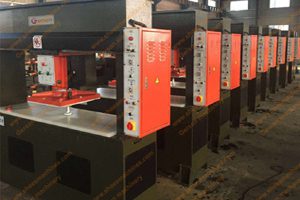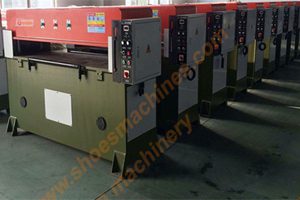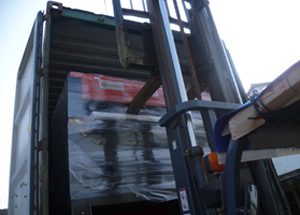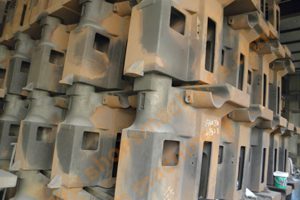Choosing the right cutting die for a specific material is crucial for achieving clean cuts, minimizing wear, and ensuring efficient production. Here’s a breakdown of the key factors to consider:
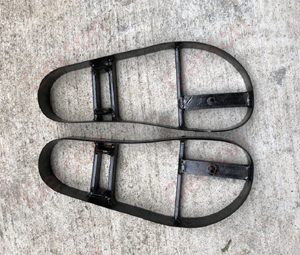
1. Material Properties:
- Hardness and Thickness: The harder and thicker the material, the more robust the die needs to be. Thicker materials require dies with higher load-bearing capacity and sharper cutting edges.
- Density and Abrasiveness: Dense and abrasive materials can cause excessive wear on the die. Consider dies made from wear-resistant materials like carbide or powder metallurgical steel.
- Ductility and Elasticity: Ductile materials may require dies with specific cutting profiles to prevent tearing or deformation. Elastic materials may need dies with tighter clearances to ensure clean cuts.
2. Die Material:
-
- High-speed steel (HSS): Suitable for medium-strength materials and thick sheets.
- Powder metallurgical steels: Offer high toughness and are ideal for materials with high strength or those that cause abrasive wear.
- Carbides: Provide maximum wear resistance and are used for materials with the highest strength.
- Steel Type: Different steel types offer varying degrees of hardness, toughness, and wear resistance. Common options include:
- Coating: Applying coatings like titanium nitride (TiN) can enhance the die’s surface hardness and reduce friction, improving its lifespan and cutting performance.
3. Die Design and Geometry:
- Cutting Edge Profile: The shape and angle of the cutting edge should be tailored to the material being cut. Different profiles are available for various materials and cutting applications.
- Clearance: The gap between the punch and die is crucial for clean cuts. It needs to be optimized based on the material thickness and properties.
- Die Strength: The die’s overall design must ensure it can withstand the forces involved in the cutting process without deforming or breaking.
4. Application Requirements:
- Cutting Speed and Force: Consider the speed and force required for the cutting operation. This will influence the choice of die material and design.
- Production Volume: For high-volume production, prioritize dies made from durable materials to minimize downtime for replacements.
- Cut Quality: The desired quality of the cut edge will influence the selection of die material, cutting edge profile, and clearance.
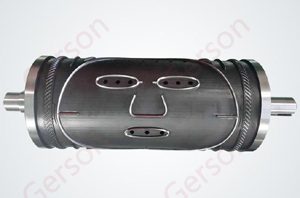
5. Additional Considerations:
- Die Maintenance: Consider the ease of maintenance and sharpening requirements for the chosen die.
- Cost: Balance the cost of the die with its expected lifespan and performance benefits.
- Supplier Expertise: Choose a reputable custom cutting die supplier,such as Gerson , with experience in manufacturing dies for the specific material and application.
Here’s a table summarizing the key factors to consider when choosing a cutting die, along with examples:
| Factor | Description | Example |
|---|---|---|
| Material Properties | Hardness, thickness, density, abrasiveness, ductility, elasticity | Hardened steel requires a more robust die than soft copper. |
| Die Material | Steel type (HSS, carbide), coating | Carbide dies with TiN coating are ideal for abrasive materials. |
| Die Design and Geometry | Cutting edge profile, clearance, die strength | Sharp cutting edges are crucial for clean cuts in thin materials. |
| Application Requirements | Cutting speed, force, production volume, cut quality | High-volume production may necessitate a die with a longer lifespan. |
| Additional Considerations | Die maintenance, cost, supplier expertise | Consider the cost of die replacements and maintenance when making a decision. |
Remember:
- Always consult with die manufacturers or experts to get specific recommendations for your material and application.
- Conduct thorough testing to validate the die’s performance and make any necessary adjustments.
This is for informational purposes only. For medical advice or diagnosis, consult a Gerson .
At Gerson, we’re a leading cutting die company driven by dedicated engineers and a commitment to R&D. We specialize in crafting custom die cutting solutions tailored to your exact needs.Our extensive range of custom dies includes:
- Steel Rule Dies
- Pre-Sharp Dies
- Forging Dies
- Machined Dies
- Rotary Dies
- Match-Metal Dies
- Scrap Removal Cutting Dies
- Hole Punches
- Creasing Dies
- Thermal Dies
- Embossing Dies
- R&D Sample Tooling
Explore our custom die cutting services to discover how Gerson can elevate your products.
